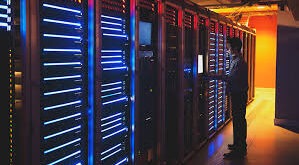It’s in our mobile phones, laptops, tablets, Bluetooth earphones, and all other electronic items. You can find it in diodes, LEDs, transistors, and microchips. It’s called semiconductor, and without it the world as we know it today will cease to exist. So, what exactly are semiconductors? Well, let’s delve deeper to understand what a semiconductor is and how it works.
A semiconductor is a material that that can work both as a conductor of electricity and as an insulator. The amount of electricity or heat applied to a semiconductor determines whether it will work as a conductor or insulator. Silicon is the most widely used semiconductor, whichis how ‘silicon valley’ got its name. By itself, pure silicon works as an insulator. But it is transformed into a semiconductor by a method called ‘doping’. In this, a small amount of impurity is mixed with the silicon crystals to create a semiconductor. There are two types of doping, as explained below.
- N-type: In this method, a small quantity of arsenic or phosphorous is added to silicon crystals. The resulting material frees up electrons, which in turns allows electricity to pass through. As electrons carry negative charge, this method is referred to as N-type.
- P-type: In this method, gallium or boron is added to the silicon crystals. This makes the chemical structure positively charged, allowing flow of electricity.
Combinations of N-type and P-type semiconductors are used to create the most basic semiconductor device known as a diode. This essentially allows the current to travel in one direction only and not the other way around.
Going a step further, one can create transistors using N-type and P-type semiconductors. In this case, three layers are used instead of the two used for diode. The combination can be either a PNP or NPN, which then works as a switch or an amplifier.
In the next step, thousands of transistors are put together to create a silicon chip. As the transistors work as switches, they can be used to create ‘logic gates’. This is the core technology used for creating microprocessor chips.
The first generations of transistors were bulky units and had limited use. Over the years, transistors have continuously gotten smaller in size. However, as silicon is reaching its limit in terms of speed and size, researchers are working to find new materials. One of the most promising tech is ‘compoundsemiconductors’, whichare created using two or more elements. These are expected to power the next generation of 5G / 6G phones, autonomous vehicles, etc.
Some of the world’s top techcompanies like Intel, IBM and Google are also working on quantum computing. If they succeed, it could reduce the current prominence of silicon-based semiconductors.
 Newspatrolling.com News cum Content Syndication Portal Online
Newspatrolling.com News cum Content Syndication Portal Online







